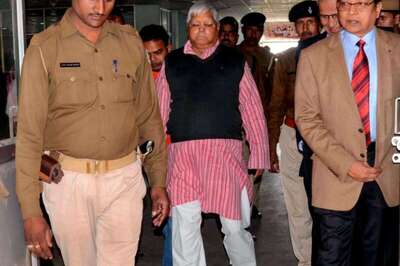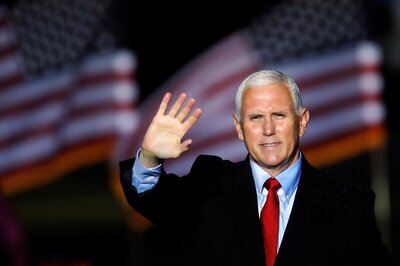
views
It started with pan-India, multi-agency raids to break the backbone of the Popular Front of India (PFI) and ultimately ended with a much-awaited ban on the proscribed outfit and its affiliates. The arrest of over 100 workers in two rounds of raids, including the top brass, had led to startling revelations, ranging from sinister attempts to establish Islamic rule in the country, targeting RSS leaders to fomenting tensions between communities. Given the seriousness of the organisation’s anti-state sentiment, many felt a ban would be the final nail in the PFI’s coffin.
But how does a ban work? And how do authorities decide what a terror outfit is? News18 explains:
Terror organisation or social outfit?
Section 2(m) of the Unlawful Activities Prevention Act (UAPA) defines a “terrorist organisation” as an organisation listed in the Schedule to the UAPA, or an organisation operating under the same name as an organisation so listed in the Schedule.
Forty-two organisations — including Hizb-Ul-Mujahideen, Babbar Khalsa International, and Liberation Tigers of Tamil Eelam — are among the terror outfits listed in Schedule 1.
The PFI had claimed to be a neo-social movement committed to empowering people to ensure justice, freedom, and security. However, security agencies accuse it of fuelling unrest and promoting terror funding.
Who can declare an outfit a terror organisation?
The power lies with the Centre under Section 35 of the UAPA “only if it believes that it is involved in terrorism”.
The Schedule can be amended by the government to add or remove organisations. An organisation shall be deemed to be involved in terrorism if it does the following:
• Commits or participates in acts of terrorism
• Prepares for terrorism
• Promotes or encourages terrorism
• Is otherwise involved in terrorism
What happens after the declaration?
Once an outfit is declared outlawed, its funding and cadre become criminalised. Under Section 38 of UAPA, a person who “associates himself, or professes to be associated, with a terrorist organisation with intention to further its activities, commits an offence relating to membership of a terrorist organisation” is punishable with imprisonment for a term not exceeding 10 years, the Ministry of Home Affairs has clarified.
Section 20 of the UAPA prescribes punishment for being member of terrorist gang or organisation. It states: “Any person who is a member of a terrorist gang or a terrorist organisation, which is involved in terrorist act, shall be punishable with imprisonment for a term which may extend to imprisonment for life, and shall also be liable to fine.”
There is also a provision for forfeiture of proceeds of terrorism. UAPA Section 24A states that even if the person is not convicted for being associated with a terrorist organisation, “proceeds of terrorism” can be forfeited to the Central Government or the State Government.
Can the outfit seek recourse?
The organisation itself or any person affected by its inclusion in the Schedule can approach the central government to get it removed.
Thereafter, a review committee is appointed which is headed by a sitting or former judge of a high court to “judicially review” the application. The organisation will be removed if the review committee “considers that the decision to reject was flawed when considered in the light of the principles applicable on an application for judicial review”, the Indian Express reported.
What does a ban mean?
A ban essentially criminalises the outfit’s membership and can allow forfeiture of its property. Member states of global organisations such as the United Nations Security Council are expected to act against terrorists and terrorist organisations; freeze their assets; prevent their entry into or the transit through their territory; prevent the direct or indirect supply, sale, or transfer of arms and ammunition to those individuals or entities listed in the Schedule.
Read all the Latest Explainers News and Breaking News here




















Comments
0 comment